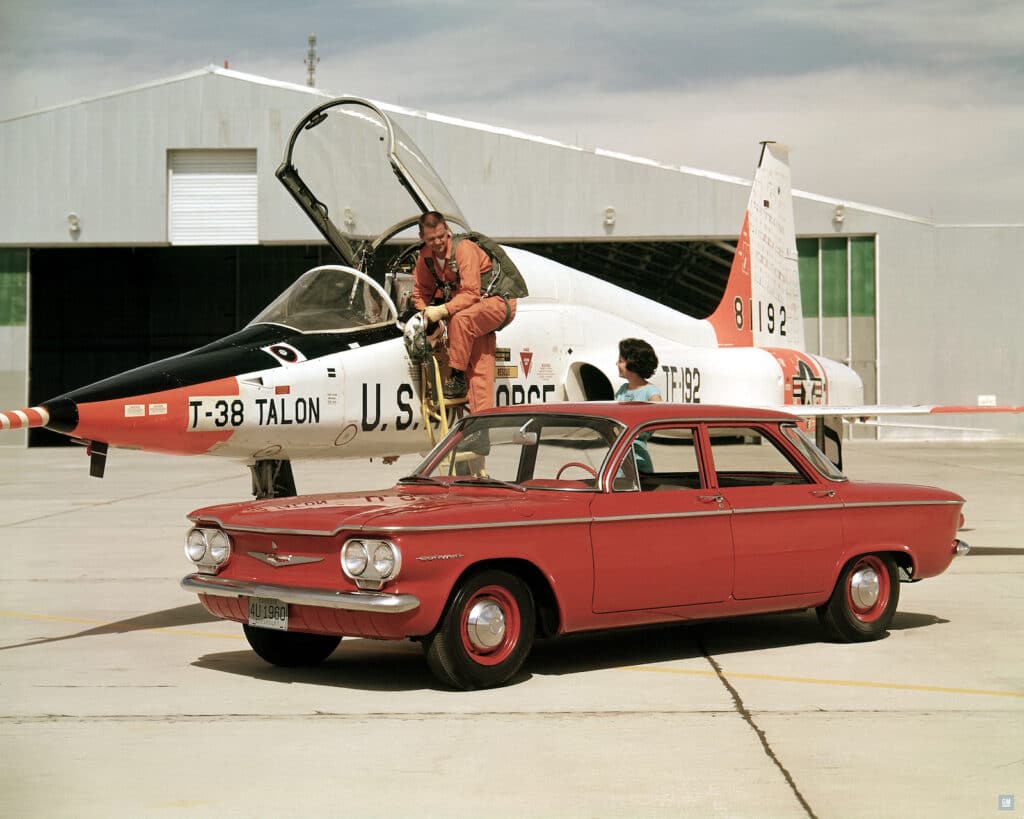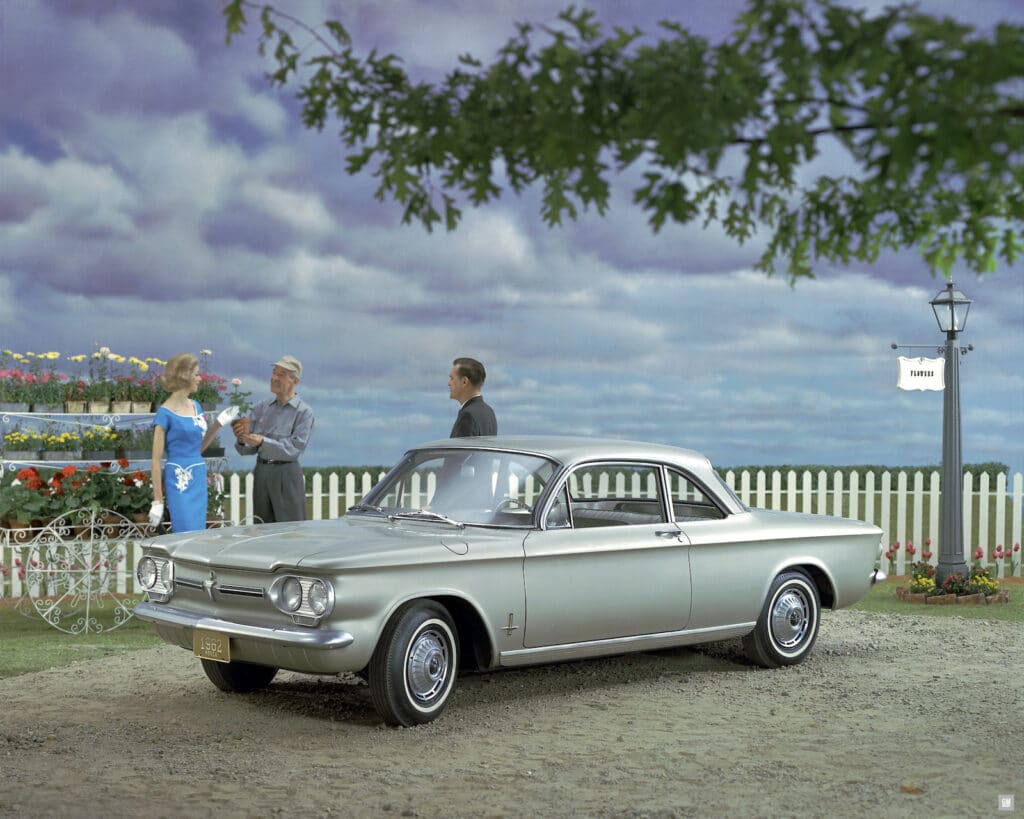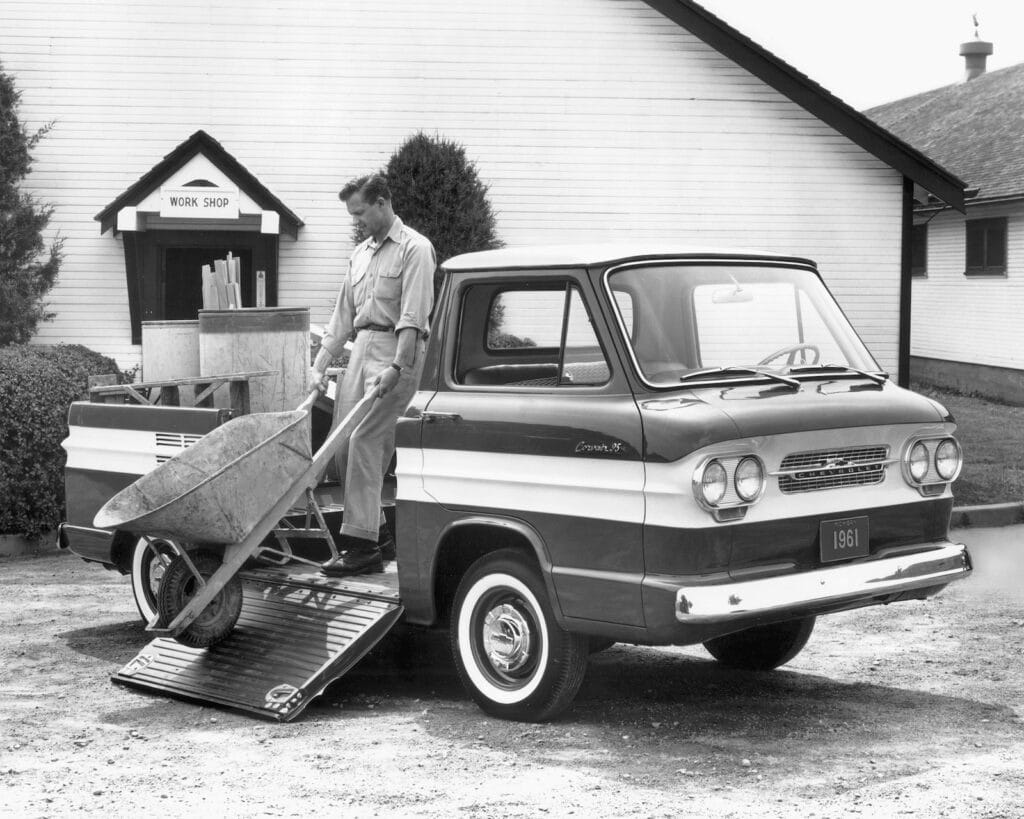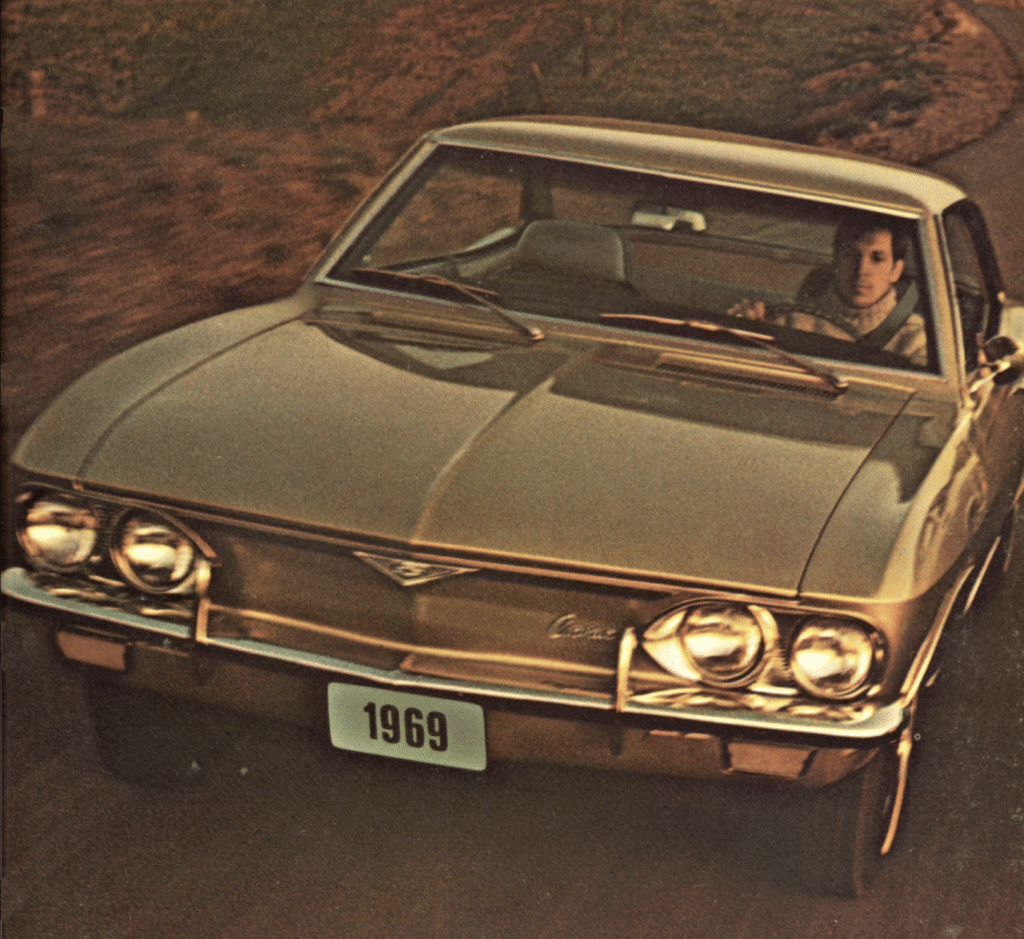The Rearview Mirror: The Car That Begat Automotive Safety Laws

In 1969, the last Chevrolet Corvair is built. America’s only mass-produced car with a rear-mounted, air-cooled engine, its sales plunge after Ralph Nader alleges the car was an unsafe deathtrap in his book, “Unsafe at Any Speed.”

Whether it was or not is open to debate. But Nader’s book led to a push for auto safety, resulting in the passage of National Traffic and Motor Vehicle Safety Act and the Highway Safety Act. Passed by Congress and signed into law by President Lyndon Johnson in 1966, they were the first federal laws dictating safety requirements in automobile and highway design, and the first of many. If anything, this is the Corvair’s true legacy.
A secret leaks
Call it an oops.
The news leaked on April 11, 1958. General Motors was planning to build a small car at its Willow Run plant in Ypsilanti, Michigan, according to the loose lips of United Auto Workers official Dave Mann. The new model was meant to compete against the rising tide of imports, particularly the Volkswagen Beetle. It would be the Chevrolet Corvair, a rear-engine, horizontally opposed 6-cylinder, air-cooled sedan.
No doubt you know the story. It’s familiar lore by now.
Meeting the Volkswagen Beetle on its own turf, it boasted GM’s first fully independent suspension. It featured a horizontally opposed aluminum engine, GM’s first aluminum engine since the failed copper-cooled Chevys of the 1920. It was a unibody design, rather than body on frame like the rest of GM’s line-up.

It was so unlike every other GM car it was named Motor Trend magazine’s Car of the Year for 1960. Other GM cars, including the Pontiac Tempest and Oldsmobile F-85, shared its platform, but not many of its unique engineering features, likes its rear swing axle, which during hard cornering could lead to sudden oversteer or incite a skid. This was different from American cars that were designed to understeer and to which most drivers had become accustomed.
But it was no different than similar designs from Porsche, Triumph, Renault and every Volkswagen Beetle. Given that, the factory recommended tire pressure of 15 psi front, 26 psi rear was critical. So too was a front sway bar. But accountants cut it for cost reasons — the engine proved pricey to build.
Certainly the Corvair’s handling became an issue with the introduction of the high-performance 1962 Chevy Corvair Monza Spyder, which was among the first turbocharged cars built by GM and a fairly uncommon powertrain choice at the time. But adding the turbo, along with bucket seats and a console lifted the Corvair’s sales, which noticeably lagged behind Ford’s mundane, and conventionally engineered, Falcon.
A small success yields a bigger one
“General Motors had taken the Corvair, an economy car, and transformed it into the hot-selling Corvair Monza simply by adding a few sporty accessories such as bucket seats, stick shift, and fancy interior trim,” Iacocca wrote in his best-selling book, “Iacocca.” “We at Ford had nothing to offer to the people who were considering a Monza, but it was clear to us that they represented a growing market.”

The Mustang’s overwhelmingly successful debut in April 1964 far outgunned the Corvair, even once the second generation arrived in 1965. Chevrolet re-evaluated their options.
Although the company had begun planning a third-generation Corvair, resources were reallocated to create a car that would challenge the Mustang. The 1965 Corvair, still a brand-new model, was to have no further development other than to meet safety requirements. GM would toy with the idea of another Corvair, but it never happened. The car’s lack of sales success against both the Ford Falcon and Ford Mustang had already doomed it.
But the worst was yet to come.
Cue the lawyer
It was the publication of a book that changed everything.
Titled “Unsafe at Any Speed,” and written by Ralph Nader, an obscure lawyer working as an unpaid consultant for Sen. Abraham Ribicoff (D-Connecticut), the book was damning, particularly Chapter One. Titled “”The Sporty Corvair-The-One-Car Accident,” it sealed the Corvair’s fate.

The fallout? Congressional hearings on automobile safety in 1966, chaired by Senator Robert Kennedy. GM executives, not used to being in the public spotlight, fared badly, especially once it was discovered that Nader suspected he was being followed, a suspicion he reported to Ribicoff.
Outraged, the senator asked GM’s then-CEO James Roche if it was true. Roche, under oath, said it was. GM had hired a private detective to dig up dirt on Nader. Nader sued GM for invasion of privacy, but it was settled for $425,000. Whatever goodwill GM had, or consumers had for the Corvair, was gone.
When the National Traffic and Motor Vehicle Safety Act was enacted, Speaker John McCormack (D-Massachusetts) credited the “crusading spirit of one individual who believed he could do something: Ralph Nader.”
A car fights for its life
Yet the very allegations that Nader levelled against the car were fixed by the time of the book’s publication. But the book had taken its toll. Sales dwindled, despite styling that was far more modern the initial generation. GM wanted to amortize its costs, and so the car continued, albeit without air conditioning for the final two model years, as using it caused it to run afoul of emission laws. Production ended this week in 1969.

But Nader wasn’t happy. Then again, is he ever?
In 1970, at Nader’s urging, the National Highway Safety Transportation Board, precursor to NHTSA, began a two-year study comparing the 1963 Chevrolet Corvair against the second-generation Corvair, as well as a Ford Falcon, Plymouth Valiant, Volkswagen Beetle, and Renault Dauphine.
The report found “the 1960–63 Corvair compares favorably with contemporary vehicles used in the tests, the handling and stability performance of the 1960–63 Corvair does not result in an abnormal potential for loss of control or rollover, and it is at least as good as the performance of some contemporary vehicles both foreign and domestic.”
Nader considered it a whitewash. After all, he didn’t get his way.
But his zealotry led to further safety standards being mandated, including shoulder-lap belts, collapsible steering columns, strengthened door latches, shatterproof windshields, padded dashboards, passive restraint systems, tire pressure monitors and rear-view cameras, along with higher fuel economy standards.
In fact, the automobile is now the most heavily regulated consumer product in the world. And it started with the Corvair and Ralph Nader. That is the car’s lasting legacy.







